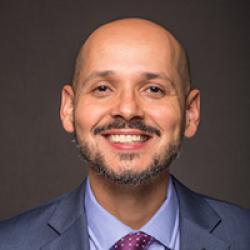Editor’s note: The opinions expressed by the authors do not necessarily reflect the opinions of the AAMC or its members.
In late October 2022, when the U.S. Supreme Court heard oral arguments about race-conscious admissions, a statement from Justice Clarence Thomas drew immediate attention.
“I’ve heard the word ‘diversity’ quite a few times, and I don’t have a clue what it means,” he said.
As the leaders of national organizations that represent medical students of varied backgrounds, we’d like to offer a shared definition.
Diversity means a student population that reflects the rich and complex social, ethnic, cultural, and racial makeup of our nation. This includes students from historically underrepresented groups whose lived experiences offer particular insights into health care.
Many medical students, especially members of minoritized communities, have themselves witnessed health inequities related to race, ethnicity, region, and socioeconomic status — what the profession calls “social determinants of health.” Students like us have seen how underserved communities lack access to high-quality medical care. In part for this reason, we seek not only to practice medicine but to correct the failings of the health care system.
Yet the two cases now before the Supreme Court could mean that fewer students like us attend medical school. If the court overrules the precedent established by Grutter v. Bollinger (2003), it will make it nearly impossible to create a physician population that reflects and understands the experiences of millions of patients across our country. This would be a grave and consequential mistake for patient care.
Admission to medical school requires extremely hard work. The years spent studying biology, chemistry, and other disciplines are all preparation for the rigors of higher education — and of medical practice and research. But this is only one aspect of medical education. Life experiences humanize medicine for would-be doctors. The admissions process must allow students to showcase all of who they are.
For one student, a child of Southeast Asian immigrants, this might include watching a parent struggle to navigate the health care system after a cancer diagnosis. For another, a member of a rural Native American Tribe, it could include growing up in a community where the closest hospital was several hours away. For other students, perhaps Black or Latino, it could include being cared for by a doctor who looked like them or communicated in a second language like Spanish — inspiring them to pursue a career in medicine themselves. Our personal stories shape our perspectives. And the truth of the matter is this: In many cases, these stories are intrinsically tied to race.
We see this on entering medical school, as our unique perspectives help inform our classmates and shape our schools’ curricula for the better. Schools strive to develop cultural humility among physicians with education and training. Cultural humility, per AAMC guidelines, means the “lifelong commitment to self-evaluation and critique, to redressing the power imbalances in the physician-patient dynamic, and to developing mutually beneficial and non-paternalistic partnerships with communities on behalf of individuals and defined populations.”
Of course, none of this happens automatically — and it is not a top-down endeavor. In our role as student-advocates, we often work with instructors and peers to increase our shared understanding of how we can care for every patient. We petition professors to update their lectures and push for more socially conscious courses that prepare students to treat diverse patient populations. We work outside the classroom to encourage continued dialogue among students. When our classmates need counsel on how they can serve patients better, we educate them on the unique challenges faced by our communities.
Pushing medical schools toward progress and social accountability is a responsibility we take seriously. Our hope is that, over time, our advocacy on behalf of underrepresented patient populations becomes foundational to all students’ academic and clinical training.
But that simply will not happen if the court puts up new obstacles to the admission of students of color. Recent gains in the diversity of medical school classes have been hard-won — and insufficient. With the nation’s population set to become more diverse in the decades ahead, it’s imperative that our future physicians reflect this shift.
We want to see a safer, more just health care system — one that’s more accessible to and representative of all patients around the country. It’s one of the reasons we chose to become doctors. And it’s the reason we hope the justices of the Supreme Court do the right thing and permit an admissions process that supports diversity among medical school classes.




